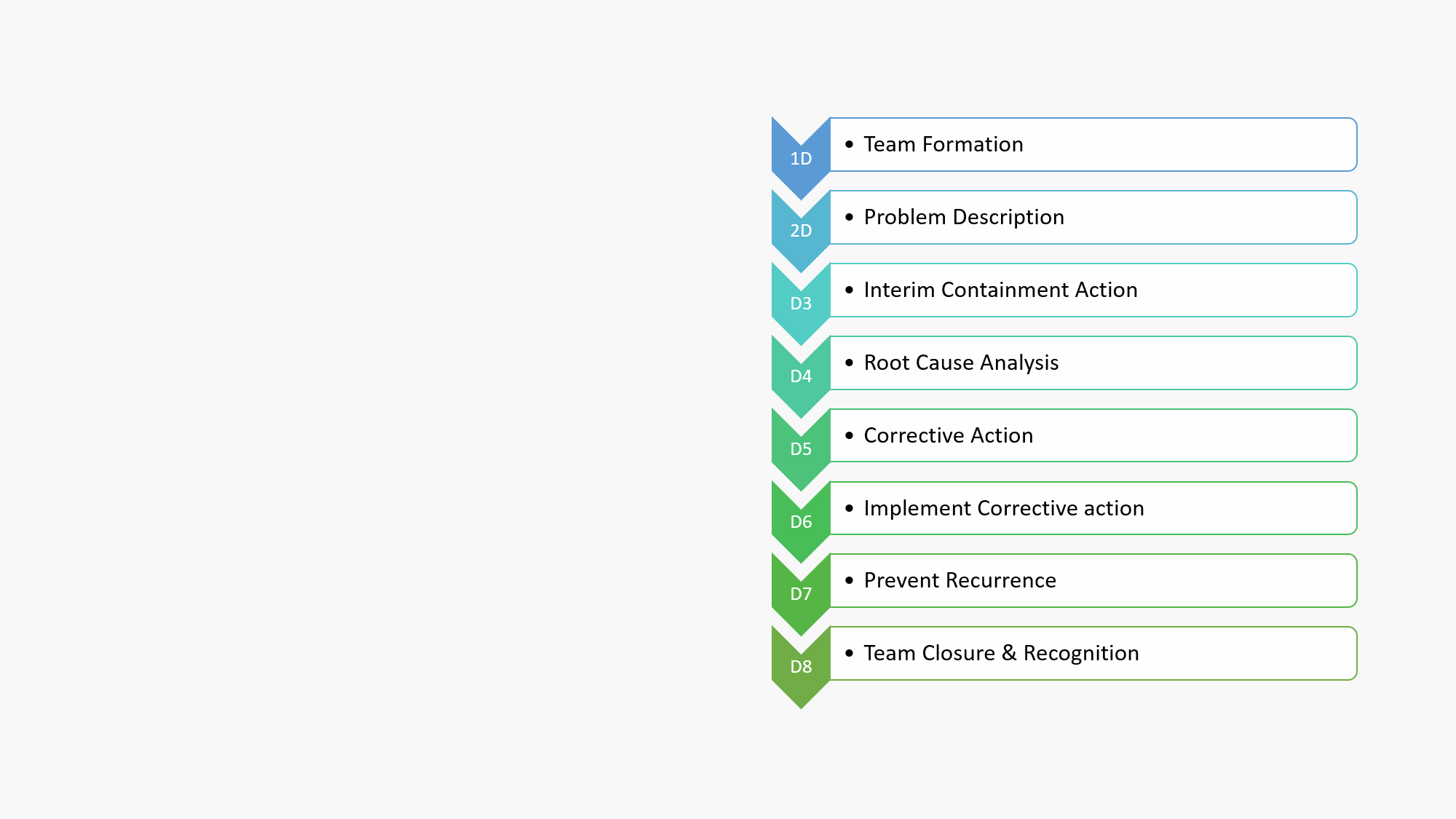
8D
Awareness Training
Solve problems in a more structured way
What is 8D?
A Proven Method for Root Cause Analysis & Continuous Improvement. 8D Problem Solving, also known as the Eight Disciplines Methodology, is a structured, team-based approach used to identify, correct, and eliminate recurring problems in processes and products. Originally developed by Ford Motor Company, the 8D methodology is now a global standard for quality management and problem-solving across industries. If you’re looking to improve product quality, reduce defects, and eliminate recurring issues, adopting the 8D problem-solving process is a smart investment.
Why Use 8D Problem Solving?
- Improved product and process quality
- Fewer customer complaints and warranty claims
- Faster problem resolution
- Stronger team collaboration
- Long-term cost savings
- Improved problem-solving skills
- Reduced recurrence of problems
- Increased operational efficiency
- Better customer satisfaction.
- It also supports ISO 9001, IATF 16949, and other quality management system requirements.
The 8D Methodology: Step-by-Step Breakdown
- D1 – Establish the Team – Form a cross-functional team with the necessary knowledge, skills, and authority to solve the problem.
- D2 – Describe the Problem – Clearly define the problem using data and metrics. Use the 5W2H (Who, What, When, Where, Why, How, and How Much) method to create a detailed problem statement.
- D3 – Implement Interim Containment Actions – Take temporary actions to isolate the problem and protect the customer until a permanent solution is found.
- D4 – Identify Root Cause – Use tools like the 5 Whys and Fishbone Diagrams to identify the root cause of the issue, not just the symptoms.
- D5 – Choose and Verify Permanent Corrective Actions (PCAs) – Determine and test the best long-term solution that directly addresses the root cause.
- D6 – Implement Corrective Actions – Put the chosen solution into full effect. Monitor and measure its effectiveness.
- D7 – Prevent Recurrence – Update standards, training, and processes to ensure the problem does not recur.
- D8 – Recognize the Team – Celebrate the success and formally recognize the efforts of the team to reinforce a culture of problem-solving and collaboration.
Our Training Approach
Our trainers are industrial experts with real work experience. We tailor the training module based on the organizations requirements. Our trainings often includes hands-on-exercises with real business problems. Whether you work in manufacturing, engineering, automotive, healthcare, or quality management, our comprehensive 8D training course teaches the skills required to perform thorough root cause analysis and implement long-lasting corrective actions.
From our training, participants will learn how to:
- Form effective cross-functional teams
- Analyze problems using data
- Identify and eliminate root causes
- Apply corrective and preventive actions
- Standardize and sustain improvements
Key aspects of our 8D training module includes
- Understanding the 8D process: Training covers the eight disciplines, which include forming a team, describing the problem, implementing containment actions, identifying the root cause, developing corrective actions, implementing corrective actions, preventing recurrence, and team recognition.
- Root cause analysis: 8D training emphasizes the importance of identifying the true root cause of a problem, rather than just addressing the symptoms.
- Teamwork and collaboration: The 8D methodology relies on a team effort, so training often focuses on how to effectively collaborate and communicate within a team setting.
- Practical application: 8D training often includes practical exercises, case studies, and real-world examples to help participants apply the methodology in their work environment.
- Continuous improvement: 8D training aims to foster a culture of continuous improvement by encouraging teams to learn from past problems and implement preventative measures.
Ready to enroll?
Enroll today for our 8 hours 8D Problem Solving Awareness Training.
Any further questions?
Contact us for any further details.
